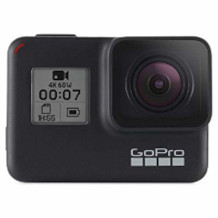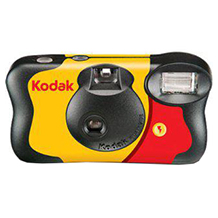Compact camera purchasing advice: how to choose the right product
- What you need to know
- Compact cameras are cameras with fixed lenses.
- They combine handiness and image quality.
- Smartphones can only compete with very basic compacts.
- The trend is towards high-quality compact cameras.
- Premium compact cameras are a smaller, lighter alternative to SLR cameras.
- Compact cameras are ideal for genres such as travel and street photography.
Compact cameras: Better than ever
The cliché says that people without much photographic know-how use compact cameras to take souvenir photos. In this function, however, the small photo apparatuses are increasingly being displaced by smartphones. So the death of the compact camera has been eagerly predicted in recent years. However, this has not happened so far. On the contrary, compacts are more alive than ever. To set themselves apart from smartphone cameras, manufacturers are equipping their compacts with more and more technical refinements. This makes them interesting for ambitious recreational photographers and even for professionals looking for a camera that is easy to take along. Instead of its demise, we are currently experiencing the renaissance of the compact camera.
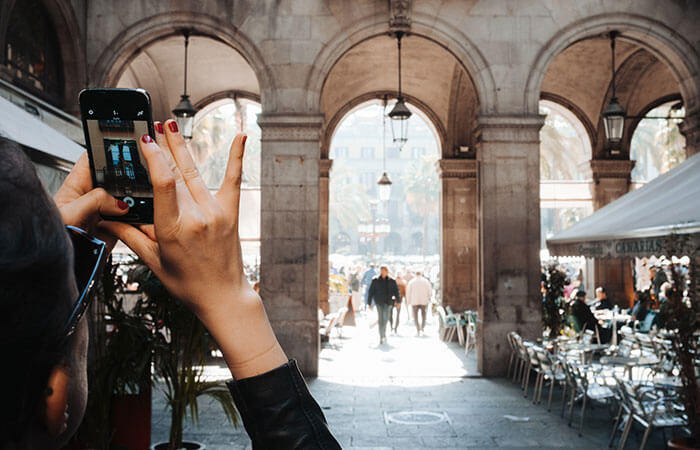
The term compact cameras covers a broad spectrum of different devices. It ranges from inexpensive zoom cameras for beginners with prices in the two- or low three-digit range to not-so-compact bridge cameras that almost look like SLR cameras and are also similar to them in handling, to noble compact cameras with a chic retro look that can cost several thousand euros. What they all have in common is that the lens is fixed and cannot be changed. The flash is also usually integrated into the camera body. Compact cameras are designed to take good photos in as many situations as possible without accessories.
What compact cameras have over the big ones
“The best camera is the one you have with you” is a common saying among photographers. This speaks in favour of compact cameras, because their light weight and small dimensions mean they can be taken anywhere. They are also comparatively affordable. Even a very good compact camera usually costs less than an SLR camera with one or two passable lenses. In addition, the compact camera hardly tempts you to buy expensive accessories; after all, everything you need is already built into its compact housing. Another advantage is that the image sensor does not need to be cleaned, as the permanently closed housing protects it very well against dust.
Of course, compact cameras also have disadvantages. The most important and obvious one is that their lens cannot be changed. The image sensor of compact cameras is relatively small, which quickly leads to noticeable image noise with dark subjects. The small sensor also has the disadvantage that it hardly produces any bokeh (blurred background). Another disadvantage of compact cameras is that they usually have neither an accessory shoe for connecting flash units nor a viewfinder.
The terms “cold pressed” or “cold extract” are signs of quality for high-value extra virgin olive oil. A differentiation is made between cold press and cold extract. With both methods, olive oil is extracted from olive pulp at a maximum temperature of 27°C. During cold pressing, olive pulp is compressed in a hydraulic press. This differs from cold extraction, where a centrifuge is used to separate the oil from the fruit pulp through a fast-spinning drum. Cold pressed and cold extract olive oil both have many plus points, as well as a few drawbacks. These are all shown in the following table.
Plus Points
- Small, light and handy
- Rarely dust on the image sensor
- Easy to use
- Relatively cheap
- Comes without accessories
- Built-in flash
Drawbacks
- Lens not interchangeable
- Significant image noise at high ISO values
- Rarely with accessory shoe
- Mostly without viewfinder
Who uses compact cameras?
Compact cameras are the right devices for all photographers who are looking for a camera that is easy to transport and who value image quality. They are significantly smaller than SLR and system cameras, but at the same time offer more photographic possibilities and better image quality than smartphone cameras. Compact cameras are particularly suitable for these user groups:
Everyday and holiday photographers – they value image quality.
Taking souvenir photos to capture beautiful and significant moments is the traditional profession of the compact camera. It is above all this area of application in which the smartphone is slowly overtaking it. But don’t special moments deserve special image quality?
Despite enormous progress, the image quality of smartphone cameras is limited by the very small lenses and sensors. Compact cameras, on the other hand, offer mechanical zoom lenses that allow zooming in without any loss of quality. Many models are also much faster than smartphone cameras. So they still take good pictures even in a dim environment.
Photography beginners – you should always have your camera with you
Photography beginners who are getting serious about the subject for the first time often dream of a digital SLR camera. Of course, anyone who seriously wants to get into photography wants professional photographic equipment. But enthusiastic beginners often forget that it is not the camera that makes the picture, but the photographer. A good photographer with a bad camera takes better photos than a bad photographer with a good camera.
How does a beginner become a good photographer? Through a lot of practice. And if you want to practise taking photos, you have to have your camera with you. However, SLR cameras are big, heavy and expensive. These are characteristics that tempt you to leave them at home. A medium-priced compact camera, on the other hand, can easily be taken anywhere and is therefore ideal for gaining lots of photographic experience.
Professionals and ambitious hobby photographers – you need a portable second camera
Anyone who is seriously involved in photography usually owns at least one good SLR camera and a whole arsenal of accessories. They would prefer not to leave the house without them, because what could be worse than coming across a great subject by chance and then not having a camera with you? But the SLR and the associated equipment weigh quite a bit. In the long run, lugging them around can be quite exhausting. Moreover, it is a nuisance to constantly have to make sure that the expensive photographic equipment does not get lost or damaged. There are countless occasions when it is simply not practical to carry your photo backpack or photo bag. For such occasions, many photographers own a compact camera as a secondary device.
Street photographers – they want to take pictures without attracting attention
There is a whole genre of photography that would be difficult to imagine without compact cameras: street photography. Documentary photography of street scenes calls for inconspicuous cameras. This actually speaks in favour of smartphones. However, ideal cameras for street photography are also fast and responsive, which is not usually the case with smartphone cameras. Ambitious street photographers therefore like to use high-end compact cameras. This upper class of compact cameras usually does not have a zoom lens, but it does have a large sensor, excellent optical properties and a high-quality, robust housing.
Travel photographers also benefit from compact cameras. Not only because they also like to shoot street scenes, but also because they take up less space in their luggage and are less of a hassle to carry on long hikes and rambles.
Different types of compact cameras
There is a wide range of different types of devices that have the design of a compact camera. After all, all cameras in which the lens is permanently attached to the body fall into this category. So if you want to buy a compact camera, you are spoilt for choice. Which model is the right one depends mainly on the intended use, but also on the budget. In terms of price, the spectrum is wide: from simple leisure cameras for less than 100 euros to professional devices costing several thousand euros, everything is there. When looking for the right compact camera, it helps to decide on a certain type of device in the first step.
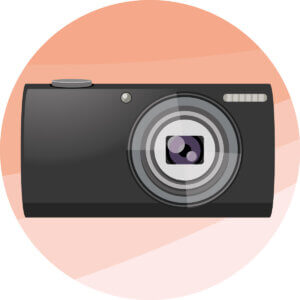
Automatic cameras
In English, simple automatic cameras are also called “point-and-shoot”. Point and shoot, that’s what these cameras are all about. They are simple snapshot cameras with which the user takes photos without having to deal with technical details. To make this work, these cameras control the shooting fully automatically. The user does not have to focus or worry about exposure time and aperture. They usually have motif programmes, for example for night shots, portraits and landscapes.
Automatic cameras are available from about a hundred euros. Advantages over smartphone cameras are the optical zoom lens and the light intensity of some models, which take good photos even in poor lighting conditions.
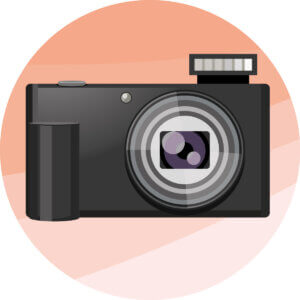
Travel zoom cameras
Those who appreciate the advantages of an ordinary automatic compact camera, but want even more zoom, go for a travel zoom camera. In principle, this is an automatic camera with a particularly large zoom range. A travel zoom camera is a camera with a zoom of 10x or more, and top models are even equipped with an optical zoom of 30x. The large zoom range makes them particularly versatile. They are, so to speak, complete photo equipment in compact format.
In terms of price and quality, the manufacturers in this segment cover a wide range. The cheapest models start at around 150 euros, while top-of-the-range models cost around 700 euros and have extras such as an optical viewfinder and a large 1-inch sensor.
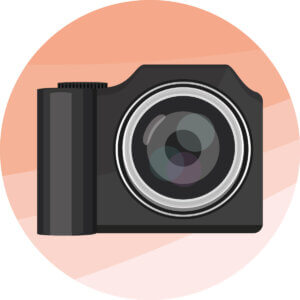
Bridge cameras
Bridge cameras are a bridge between SLR cameras and compact cameras. As with compact cameras, the lens is fixed and cannot be changed. In terms of appearance, size and features, they are more like SLR cameras, but a little smaller and lighter. For a relatively low price, they offer many of the advantages of SLRs: their size and weight make them easier to hold than small compacts, many have a viewfinder, and in addition to a pop-up flash, most are equipped with a hot shoe for connecting an external flash. They also have significantly more manual setting options than automatic cameras.
What gives bridge cameras an advantage over compact cameras is their huge zoom range. This is why they are often called superzoom cameras – a name they share with travel zoom cameras with a particularly large zoom range. 30x zoom is rather the lowest limit for bridge cameras, 60x zoom is not uncommon either. This makes bridge cameras the first choice for anyone who wants a lot of zoom for little money. In terms of price, they are comparatively moderate. Many models cost around 300 euros, inexpensive devices are available for as little as 200 euros, and 600 euros is almost the end of the line. Only a few premium models cost considerably more.
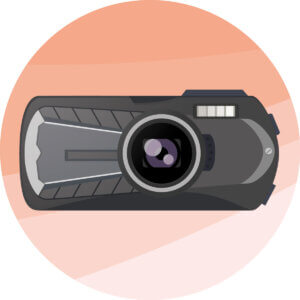
Outdoor cameras
Good motifs are not always waiting in environments that are particularly conducive to the inner workings of cameras. Above all, water, dust and shocks damage the sensitive optics and electronics. If you want to take photos while rafting, skydiving or even just on a sandy beach, you have two options: Either pack the camera in a protective cover or buy an additional outdoor camera. The latter option is usually much less cumbersome and safer, because cameras for outdoor use were designed to be robust from the ground up.
Dust and splash water protection is a matter of course for these cameras. So taking photos in pouring rain or in the desert is no challenge for them. They are also well protected against falls from normal operating heights. Particularly robust models are even waterproof at an immersion depth of up to several metres.
One limitation of outdoor cameras is that the zoom lens is not particularly powerful. Fivefold magnification is usually the end of the line. The blades of conventional zooms are a gateway for moisture and dirt. For this reason, manufacturers of outdoor cameras rely on a special construction that does without moving external parts. The entire zoom mechanism has to be housed in a rigid casing, and there the space and thus also the range of the zoom is limited.
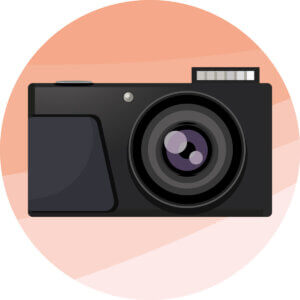
Creative cameras
Creative cameras are small, mostly black and can be had for no less than 400 euros. They are the cameras of choice for demanding photographers who like to use a practical compact camera on the go. Instead of splurging on big zooms and megapixels, creative cameras focus on the qualities that really matter for image quality. They have high-quality lenses with high light intensity and larger image sensors than automatic cameras. The option of fully manual control is a matter of course with these cameras, but alternatively the user can also use various automatic programmes.
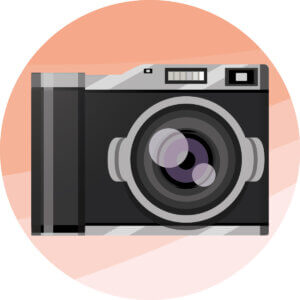
Noble compact cameras
The boundaries between creative cameras and high-end compact cameras are blurred. Precious compact cameras have similar qualities to creative cameras, but are usually much more expensive and of higher quality. While good creative cameras can be had for well under 1,000 euros, a high-end compact camera can cost several thousand euros. Apart from the price, the main distinguishing criterion is the even larger sensor. Many high-end compact cameras use APS-C or even full-frame sensors. Often they do not have a zoom lens either, but a fixed focal length.
What is a full-frame sensor?
Full-format sensors in digital cameras have the dimensions of 35 mm negatives in analogue photography: 24 millimetres by 36 millimetres. This is large for a digital image sensor, most sensors are much smaller. Full-format sensors allow for particularly detailed images and are only installed in very high-quality compact cameras.
The best of them achieve an image quality that can compete with that of professional SLR cameras. Another distinguishing criterion is the housing: while creative cameras usually have a plain, monochrome plastic housing, high-end compacts are often clad in a retro-look housing made of metal with leather or rubber applications.
Things to know when buying a compact camera
When buying a compact camera, interested buyers are confronted with a lot of technical details. What do the numbers on the lens mean? Are zoom and megapixels really that important? What role does sensor size play? With a little basic knowledge about camera technology, all these details no longer seem so confusing, and customers can make a qualified purchase decision.
Camera size
As the name suggests, compact cameras are relatively small. However, there are clear differences in size within the device category. A tiny and flat automatic camera has completely different dimensions than a comparatively bulky bridge camera. The weight also differs considerably: while the Canon PowerShot G9 X creative camera, for example, only weighs around 200 grams, a bridge camera like the Panasonic Lumix DMC-FZ72EG-K weighs more than half a kilogram.
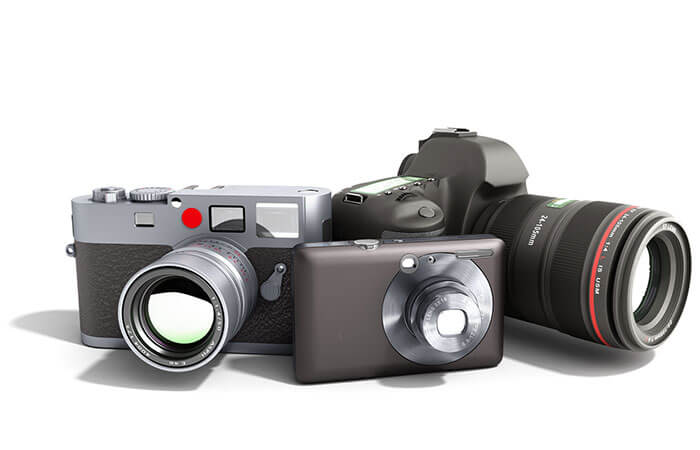
The advantage of small cameras is clear: they are very portable. Their small size means they fit into even the smallest bag and are light enough not to be a burden even on long walks. However, many photographers don’t like their camera to be too small and light, as this makes it difficult to hold it steady when shooting hands-free. Tiny switches and controls are also rarely met with enthusiasm. They are difficult to use, especially for people with large hands. So when buying a camera, it is important to make a decision: should the camera be particularly small so that it fits easily into a jacket pocket, for example, or is it more important that it fits comfortably in the hand and that the controls feel easy to grip?
Image sensor
The size of the image sensor is perhaps the most important decision criterion when buying a camera. After all, the sensor size is decisive for the image quality. It is the digital counterpart to the film in analogue cameras. Basically, the larger the sensor, the better the image quality. A larger sensor captures more light. This makes it possible to take high-quality pictures without a flash, even with poorly lit subjects. Small sensors, on the other hand, produce image noise in such shooting situations because they increase the ISO value to compensate.

But small sensors also have their advantages. They allow for a more compact camera design and are cheap to produce. In addition, it is possible to equip a camera with a small sensor with a very zoom lens at relatively low cost. The smaller the sensor, the shorter the focal length needed for a given magnification.
What does the ISO value mean?
The ISO value describes the light sensitivity of a film or an exposure sensor. In analogue photography it depends on the film loaded, in digital cameras it is increased by electrical amplification of the image signal. The higher the ISO value, the less light is needed and the shorter exposure times are possible. However, higher ISO values also lead to more image noise, both in digital and analogue photography.
Many smartphones use tiny sensors in 1/3-inch format. This makes it possible to accommodate the miniaturised camera optics in the thin housing of the device. Inexpensive compact cameras usually rely on somewhat larger 1/2.3-inch sensors, but in the lowest price range, smartphone-sized image sensors are also used.
In the middle price range, compact cameras often use 1-inch sensors. These sensors are 12.7 millimetres wide and 9.5 millimetres high. However, this still makes them significantly smaller than the Four-Thirds and APS-C sensors used in high-end compact cameras. They have dimensions of 17.3 x 13.0 (Four-Thirds) and 22.2 x 14.8 millimetres (APS-C) respectively. Large full-frame sensors, whose dimensions are derived from the dimensions of analogue 35mm film (2.4 by 3.6 centimetres), are rare in compact cameras. They are mostly found in professional SLR cameras.
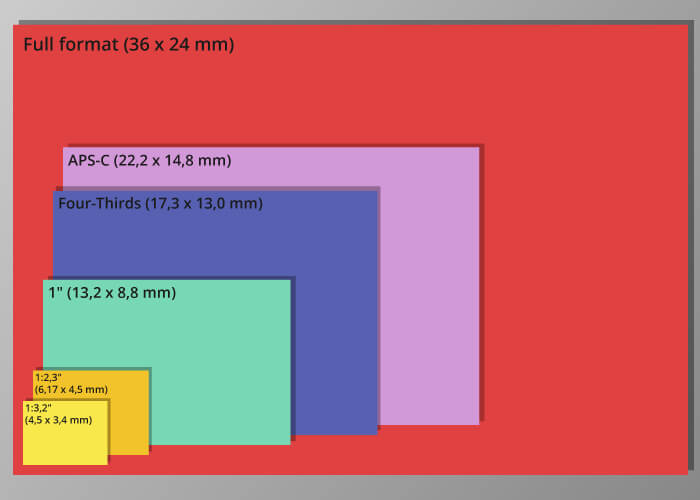
Resolution
Resolution, expressed in megapixels, still plays an important role in the marketing of compact cameras and also in the minds of many consumers. While it was indeed a limiting factor in the early days of digital photography, the resolution of modern digital cameras is usually always sufficient. Whether a camera takes pictures with 12 or 20 megapixels only matters in practice if the plan is to print the photo in poster size. Much more important for image quality are a good sensor and high-quality optics.
Zoom range
Just like the resolution, the zoom factor is an important marketing factor for compact cameras. Manufacturers like to advertise with impressive figures. 20x and even 60x zooms are no longer uncommon today and are also available for little money.
However, large zoom ranges have clear disadvantages. The larger the zoom, the worse the light intensity of a camera usually is. It has to compensate for this by increasing the ISO number and lengthening the exposure time, which means that blurred and noisy images are more common.
High-quality creative cameras and high-end compacts usually have fixed focal lengths or rather moderate zooms with a magnification of two to a maximum of six times. Their buyer group attaches great importance to image quality and knows that extreme zoom factors are rarely necessary, for example, when photographing wildlife or to capture the action on stage in a large format in event photography. In most other shooting situations, the photographer can simply move closer to the subject if he wants it to be bigger in the picture.
Camera manufacturers like to advertise the digital zoom on their cameras. It enlarges the subjects by means of an algorithm, but this results in very blurred and pixelated photos, similar to zooming in with image editing software. The digital zoom, unlike the optical zoom, does not capture more details, but merely makes the existing details larger. Therefore, only the optical zoom is relevant for camera purchases – any photographer can easily create the effect of a digital zoom afterwards with image editing software.
Depth of field
In photography, only objects that are a certain distance from the camera lens appear sharp. If objects appear sharp in a large area, the photo has a lot of depth of field; if they appear sharp only in a small area, it has little depth of field.Three factors influence depth of field: the size of the aperture, the focal length of the lens and the format of the sensor. The wider the aperture, the longer the focal length and the larger the sensor, the smaller the depth of field range. Smartphone cameras, for example, have very short focal lengths and very small sensors, so they have a lot of depth of field. They make everything sharp from a few centimetres away from the lens.
Autofocus
It is very annoying for photographers when an otherwise successful picture is simply not sharp enough. This image error is usually only noticed at home when viewing the image on the computer screen. Then, of course, there is no possibility of repeating the shot. Today, thanks to autofocus (AF), which is available in almost all modern cameras, it is easier than ever to take sharp pictures. This was not the case in the past. Photographers had to manually turn a ring on the lens until the desired image area was sharp in the viewfinder. For “fast” genres like sports, street and wildlife photography, this required a practised eye and a nimble hand.
Modern compact cameras almost always have autofocus. This takes care of the focusing for the photographer. Although autofocus is an invaluable aid, it cannot guarantee that all pictures will always be sharp. For one thing, an autofocus system needs a certain amount of time to focus. If the photographer doesn’t give it this time and presses the shutter button all the way down too quickly (most cameras focus with the autofocus half-pressed), the image will be out of focus. Another common mistake is that the camera focuses, but not on the subject the photographer would like to have in focus. In general, the autofocus of high-quality cameras responds more quickly than that of cheaper models.
Typically, cameras have four different focus settings:
- MF: Manual focus. This setting is usually missing on compact cameras, as these devices do not have a ring on the lens for manual focus adjustment.
- S: Stable autofocus. The camera focuses on a specific object and maintains the focus setting.
- C: Continuous autofocus. Autofocus follows the targeted object, which remains in focus even as it approaches or moves away from the camera.
- A: Automatic autofocus. The camera’s control electronics autonomously decide whether the focus follows the targeted object or not.
Viewfinder
In analogue photography, cameras could not do without a viewfinder. In digital compact cameras, on the other hand, the display on the back of the housing does the job. Many manufacturers do without an additional optical or electronic viewfinder to keep the price of their products low and save space in the housing. Upper-class models, on the other hand, are often equipped with one, because a viewfinder has advantages: It is easy to read even in very bright sunlight, and looking through the viewfinder also hides the surroundings of the selected image section, which simplifies image composition.
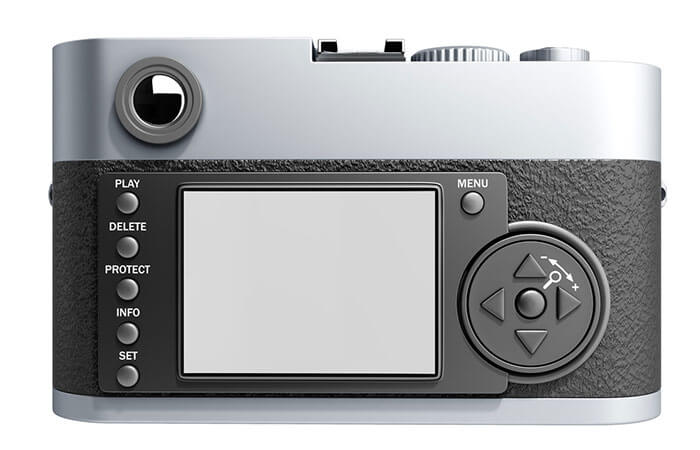
Image stabiliser
Especially at long focal lengths, i.e. in the case of compact cameras with zoom lenses with high magnification, and in poor lighting conditions, there is a risk of blurring a photo. An image stabiliser, which is now common even in mid-range cameras, helps against this.
Buyers should make sure that it really is an optical or mechanical image stabiliser that counteracts an unsteady camera position caused by movement of the lens or sensor. Manufacturers often advertise an image stabiliser that, on closer inspection, turns out to be an “electronic image stabiliser”, which, strictly speaking, is not an image stabiliser at all. The marketing phrase usually means nothing other than that the camera’s software increases the ISO value in order to reduce the exposure time and thus the risk of camera shake. However, this also increases the image noise.
Lens
The lens is the optical component of a camera. It consists of several lenses arranged in a row that project the image onto the film or sensor. The lens also contains an aperture. Based on the focal length, which determines the angle of view, lenses are divided into normal, telephoto and wide-angle lenses. A zoom lens allows the focal length to be changed and can thus cover all three viewing angle ranges.
Lenses are usually labelled with the most important key figures. These are the values for the focal length and for the f-number. For example, if a lens is labelled “8.8-36.8mm 1:1.8-2.8”, it is a zoom lens with a focal length of 8.8 to 38.8 millimetres, where the aperture can be set to a minimum value between 1.8 and 2.8, depending on the zoom level.
Aperture
The aperture is a mechanical shutter in the lens that is opened by pressing the shutter release button. The aperture can be opened to different degrees so that it can achieve optimal exposure. The f-number shows which aperture is set. Its value shows how much light passes through the lens, not the diameter of the aperture, so the f-numbers of different lenses are easily comparable.
Luminous intensity
The light intensity of the lens determines how much light falls on the sensor. A lens with low light intensity can only be used in bright sunlight or for photos with flash or with very long exposure times, whereas a fast lens takes good photos indoors and with sparse artificial lighting. The focal length and the aperture of a lens are decisive for the light intensity. The shorter it is and the wider the aperture can be opened, the faster it is.
In photography, luminous intensity is given in standardised form as a fraction. The corresponding value refers to the largest aperture that can be set. A lens with a maximum aperture of 1:1.8, for example, is significantly faster than one with a smaller maximum aperture of 1:3.2. Often, only the denominator of the fraction is given, which can easily lead to confusion for photography beginners. The smaller f-numbers then mean larger apertures or faster lenses.
Exposure time
The exposure time determines how long the light falls on the sensor. Along with aperture and sensor sensitivity, it is one of the three factors that determine whether an image is correctly exposed. The exposure time is usually only fractions of a second, for example, or second. If it is too high, moving subjects will appear blurred and when photographing without a tripod there is a risk that the photographer will blur the image.
Extras and other features
A camera consists not only of the optical system of its lens and the semiconductors of its electronics. Other features and additional functions are important for its user-friendliness and suitability for everyday use. They play a decisive role in determining whether the camera is a pleasure to use.
Display
Important criteria for the quality of a compact camera display are above all the resolution and brightness. It goes without saying that the display should be as high-resolution as possible in order to adequately reproduce the megapixel images of the camera.
The brightness of the display is a sticking point with many cameras: bright displays need a lot of power and thus reduce the battery life. But if the display is too dark, it is difficult to read in bright ambient light, i.e. in a good lighting situation from a photographic perspective. Manufacturers find themselves in a dilemma. Newer display technologies that reflect part of the ambient light promise a way out.
A very welcome feature is a swivelling or rotating display. This always comes in handy when photographers are not taking their photos at eye level. With a movable camera screen, a photographer can, for example, take macro shots of flowers in a meadow without having to lie on the ground. Concertgoers who hold their cameras above their heads to take photos of the performers will also appreciate a swivelling display.
Batteries and rechargeable batteries
Today, only a few compact cameras use standard batteries of the types Mignon (AA) or Micro (AAA). Instead, manufacturers use rechargeable batteries in special designs that are only compatible with the respective device. These are very compact and thus enable smaller cameras. The disadvantage, however, is that replacements are sometimes hard to come by and are usually relatively expensive. Apart from the low price, standard batteries have the advantage that the user can also use disposable batteries. This is useful when no power outlet is accessible for long periods of time, for example during extended mountain hikes.
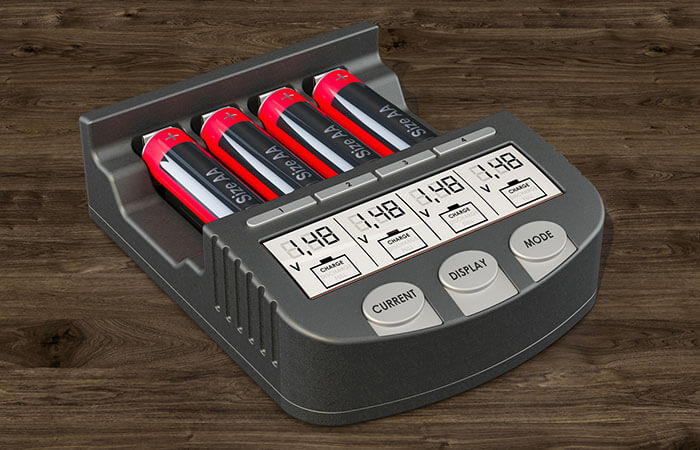
WLAN
A built-in WLAN chip is now standard equipment on all compact cameras that are not in the lowest price range. It offers two advantages: First, it can be used to transfer pictures wirelessly to a computer or tablet. Some devices even post the photos directly to social networks such as Facebook or Instagram. Secondly, current digital cameras can often be controlled with a smartphone app via WLAN. The control options vary greatly depending on the model. With some cameras, the smartphone only functions as a shutter release, with others it is even possible to adjust the exposure settings and control the lens remotely.
NFC
Similar to WLAN, NFC (Near Field Communication) is a standard for wireless data transmission. Many consumers are familiar with the technology from cashless payments. It ensures that bank and credit cards no longer have to be inserted into the payment terminal, as it is sufficient to simply swipe them over it.
NFC is considered particularly secure because the range is only a few centimetres. This makes this type of wireless connection well suited for sending pictures from a camera to a smartphone or tablet directly next to it, for example.
GPS
One advantage of smartphones over digital cameras has long been that they automatically tag pictures with a GPS tag. The exact longitude and latitude at which the picture was taken is stored in the picture’s metadata. This makes it very easy for the user to find photos taken at a specific location. However, compact camera users no longer have to do without this function, as many current models also offer it.
Accessories complete the photographic equipment
Photographers are said to have a certain infatuation with technology and accessories. This may be true, but the purchase of a camera alone is rarely the end of the “photo equipment” story. Various additional equipment increases the fun of photography and is sometimes even necessary. Without a memory card, for example – the film of the digital era, so to speak – a camera is not much good. Although there are not quite as many accessories for compact cameras as there are for SLR cameras – after all, the lens cannot be changed, and the connection of a stand-alone flash unit is not normally provided for – there are nevertheless sensible and exciting additional products available for the compact class as well.
Memory cards
An SD card for storing photos is necessary for every compact camera. Two are better. This gives the photographer a backup in case the memory card is damaged or lost.
The most important criterion for memory cards is storage space. Here, of course, the more the better. Most photographers opt for a compromise between price and capacity. The SD card should have space for at least 1,000 photos. When saving in JPEG format, a high-resolution image needs about ten megabytes and in RAW format about 25 megabytes. So a 16-gigabyte memory card is a good choice for JPEG, for RAW it can be 32 gigabytes. Buying cards with less than 16 gigabytes of memory is not advisable, as memory cards with 8 gigabytes cost only slightly less than 16-gigabyte cards.
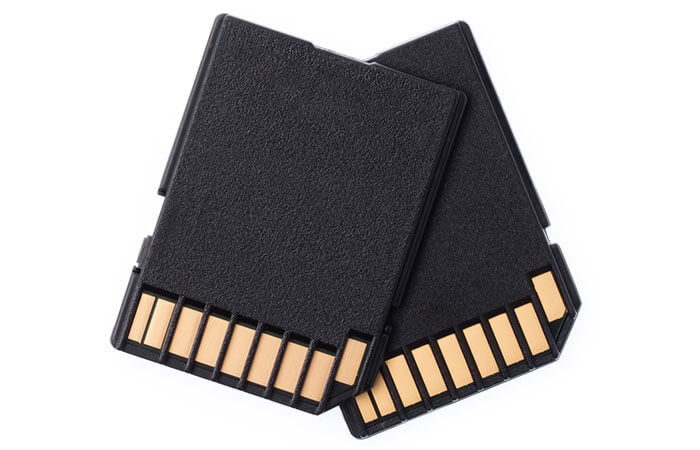
While the reading speed of memory cards for digital cameras is relatively irrelevant, the writing speed plays a major role. It is decisive for how quickly the camera saves the photos it takes. Especially users who film with their camera should pay attention to this. For full HD videos, the write speed must be at least 10 megabytes per second.
In contrast to the higher read speed, manufacturers only specify the less impressive write speed as a speed class. There are now three different classification systems: The original speed class, the UHS class and the video class. The table shows which write speed is hidden behind the respective designation.
| Write speed | Speed class | UHS class | Video class |
| 90 MB/sec | – | – | V90 |
| 60 MB/sec | – | 3 | V60 |
| 10MB/sec | 10 | 1 | V30 |
| 6 MB/sec | 6 | – | V10 |
| 4 MB/sec | 4 | – | V6 |
| 2 MB/sec | 2 | – | – |
Memory cards that have a higher write speed than 10 megabytes per second are no longer covered by the traditional speed classes. They can be recognised by the fact that either a UHS speed class (number inside a “U”) or a video speed class (number behind a “V”) is printed on them.
It is not worth buying a memory card that is faster than the speed at which the camera can process the data. Users can easily find out the maximum storage speed of their own camera with a quick internet search.
Bag
A bag is not absolutely necessary for compact cameras. Most of them are small enough to fit in a jacket pocket or even a trouser pocket. Nevertheless, most photographers do not want to do without a camera bag. It protects the camera better than any clothing pocket and usually has storage space for small accessories such as a second memory card, a spare battery and a charging cable. So-called compact cases, which are only a little larger than the camera itself, are common for compact cameras, either as hard or soft cases.
Underwater housing
The price differences for underwater housings are great, as are the differences in quality. While inexpensive bags with prices below 100 euros are just waterproof enough to use the camera at snorkelling depths, the stable underwater housings of higher-priced models are designed for diving depths of up to 40 metres. Such housings are available from around 300 euros. If you want to go even deeper, the housing can quickly cost more than the camera itself. Underwater camera housings cost up to 1,500 euros, with which technical divers can reach up to 60 metres below the surface.
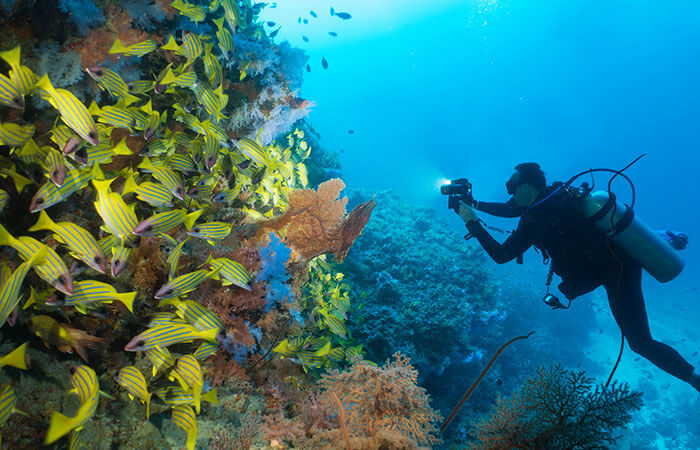
(Mini) tripod
A tripod is necessary in some shooting situations, even with compact cameras, to prevent image blur. It is therefore often used, especially for night shots without flash and when shooting in the telephoto range. Tripods are considered more of an accessory for “serious” photography with an SLR camera, but they also expand the photographic possibilities of compact cameras.
For occasional long exposures or photos with the zoom extended to the maximum, it doesn’t have to be a big tripod. Mini tripods that are lightweight and save space in your luggage are quite sufficient in many cases. Since a compact camera weighs much less than an SLR camera with lens, the tripod does not have to be designed for high loads. Comparatively inexpensive models are usually sufficient.
Tripods are usually made of either wood, aluminium or carbon. Each of these three materials has advantages and disadvantages. Wooden tripods are very stable and low in vibration due to their relatively high weight. However, the weight is a disadvantage when transporting them, which is why they are hardly ever made today. Aluminium tripods are a good standard. They are robust and have a good price-performance ratio. Carbon tripods are only worthwhile if every gram really counts. They weigh about 20 to 30 per cent less, but cost considerably more than comparable aluminium models.
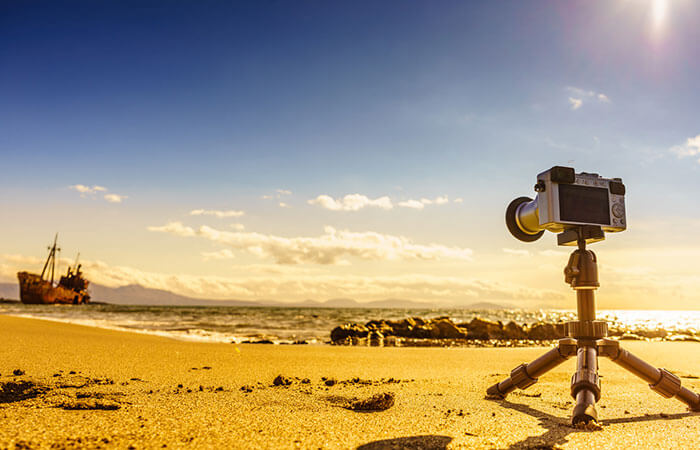
Printer
Today, photos are shared more often on social networks than printed out, but the photo on paper still has a very special appeal. Paper prints of digital photos can be ordered from a lab, but it is faster and more practical to print the images yourself. Many commercially available inkjet printers that also print documents are suitable for this purpose. However, the photo quality of many of these devices is not particularly convincing. It is therefore worthwhile to read various test reports on the devices in question before making a purchase.
Special photo printers usually deliver better results. However, they are not designed for printing text documents. Small, battery-powered models can easily be taken along and turn the digital compact camera almost into an instant camera. In addition to the inkjet process, photo printers also use the thermal sublimation process. The image quality is similar for both, but prints from thermal sublimation printers are more resistant to ageing.
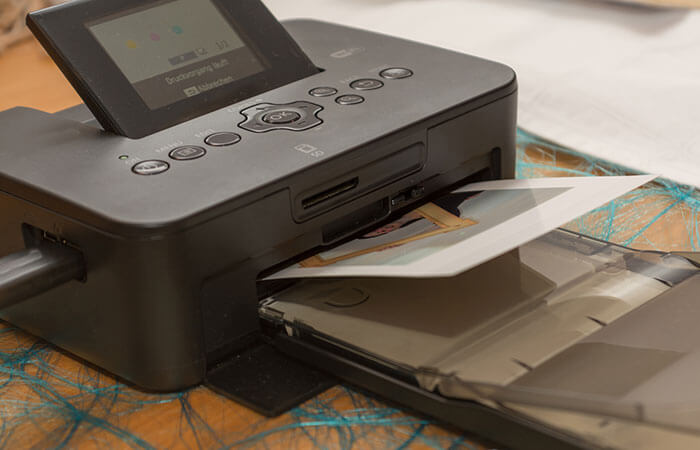
Laser printers are completely unsuitable for photo printing. Neither colour fidelity nor detail reproduction nor the surface quality of the paper used are sufficient for satisfactory photo prints. They are only suitable as an alternative if a picture is to be printed cheaply in large quantities and the quality is of secondary importance.

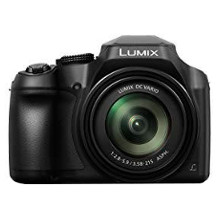
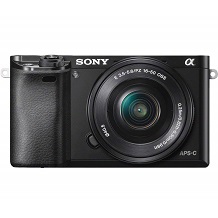
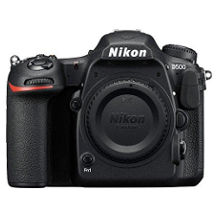
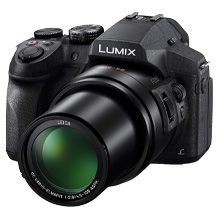
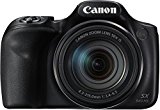
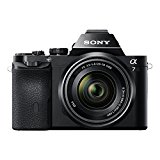
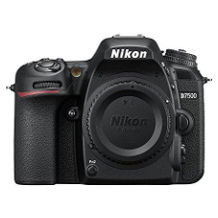
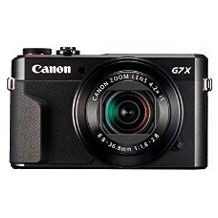
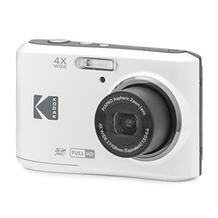
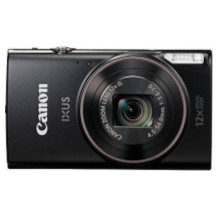
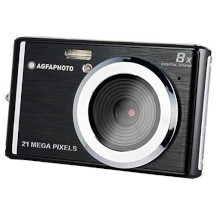

 950 reviews
950 reviews


